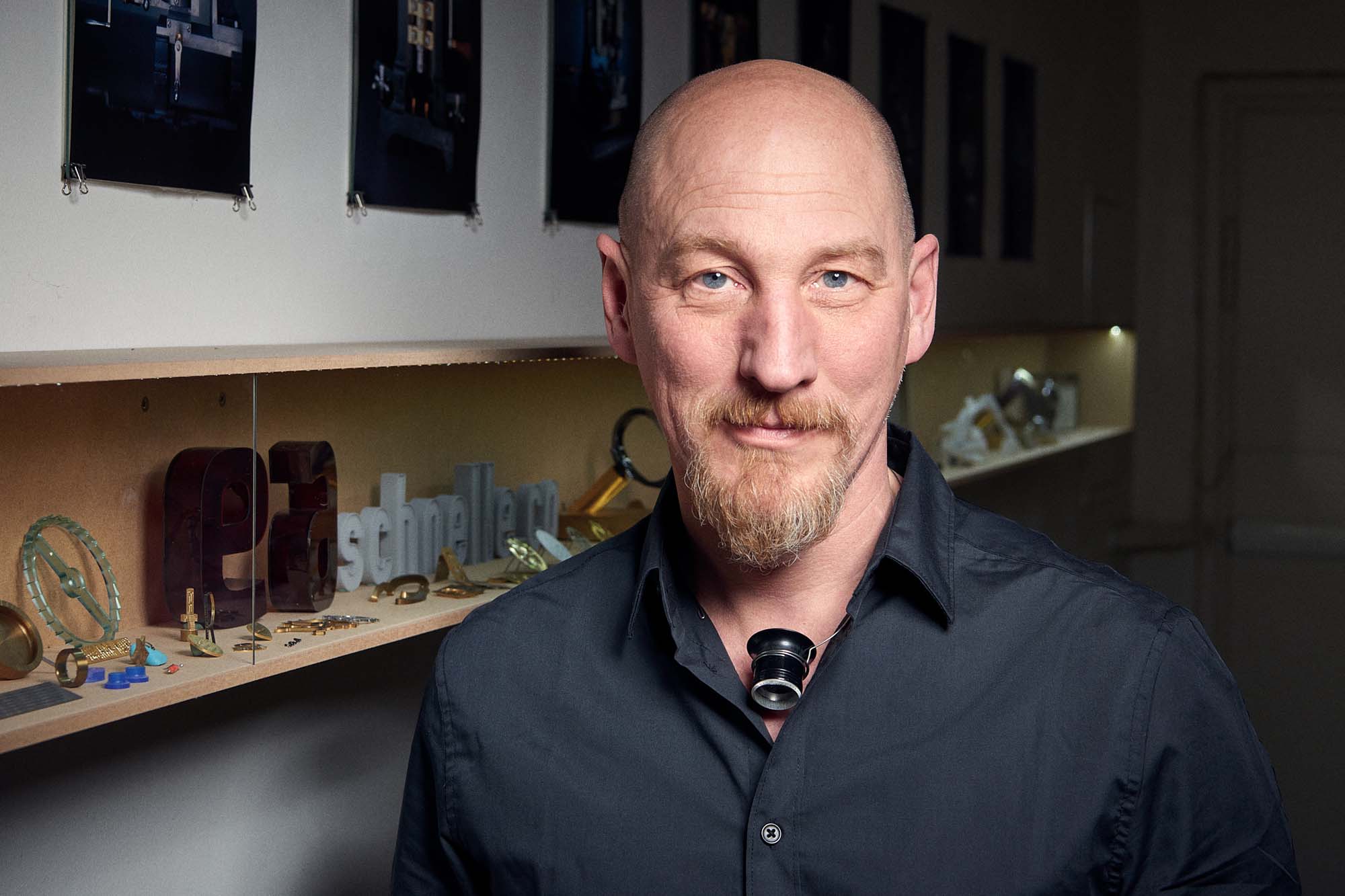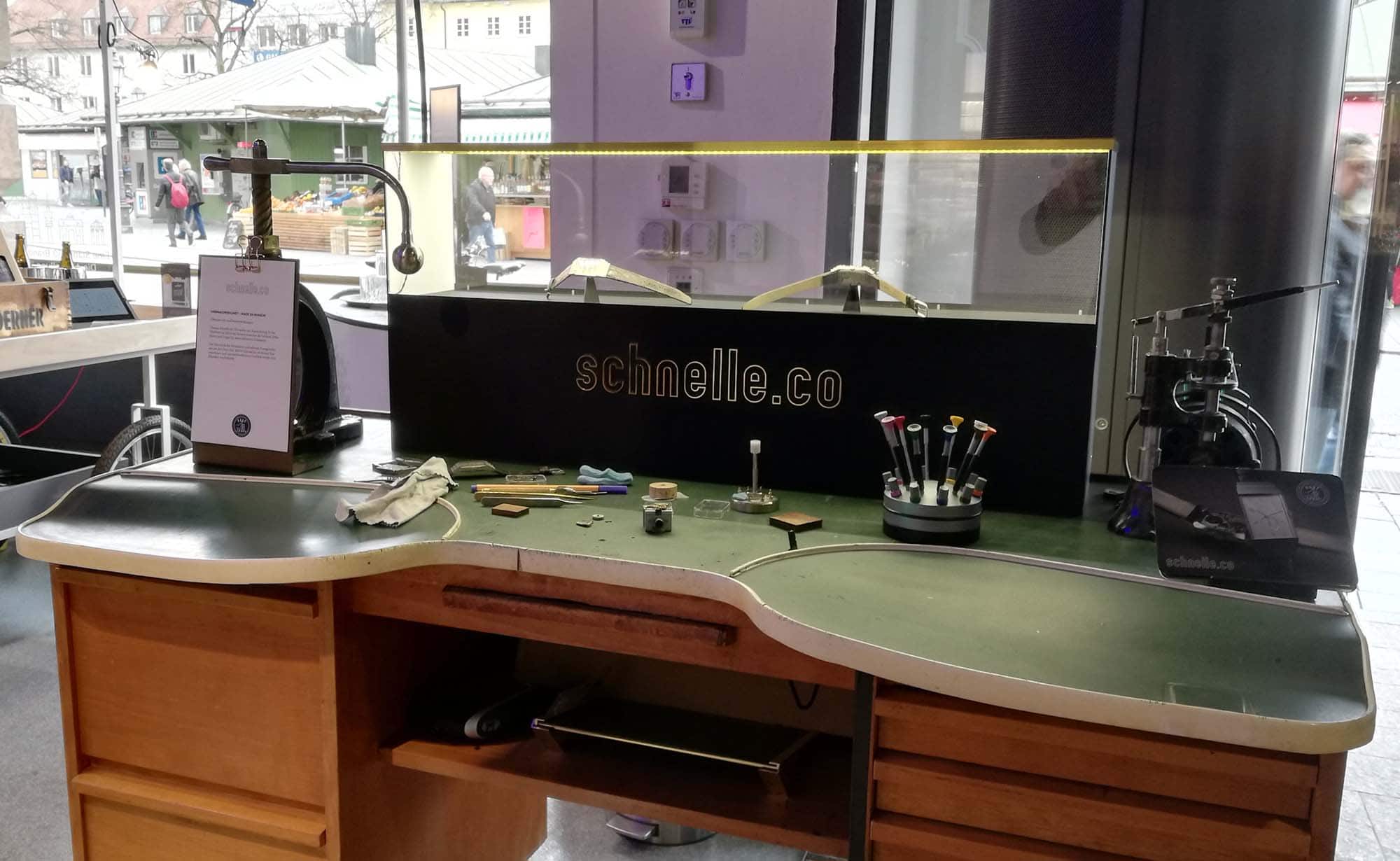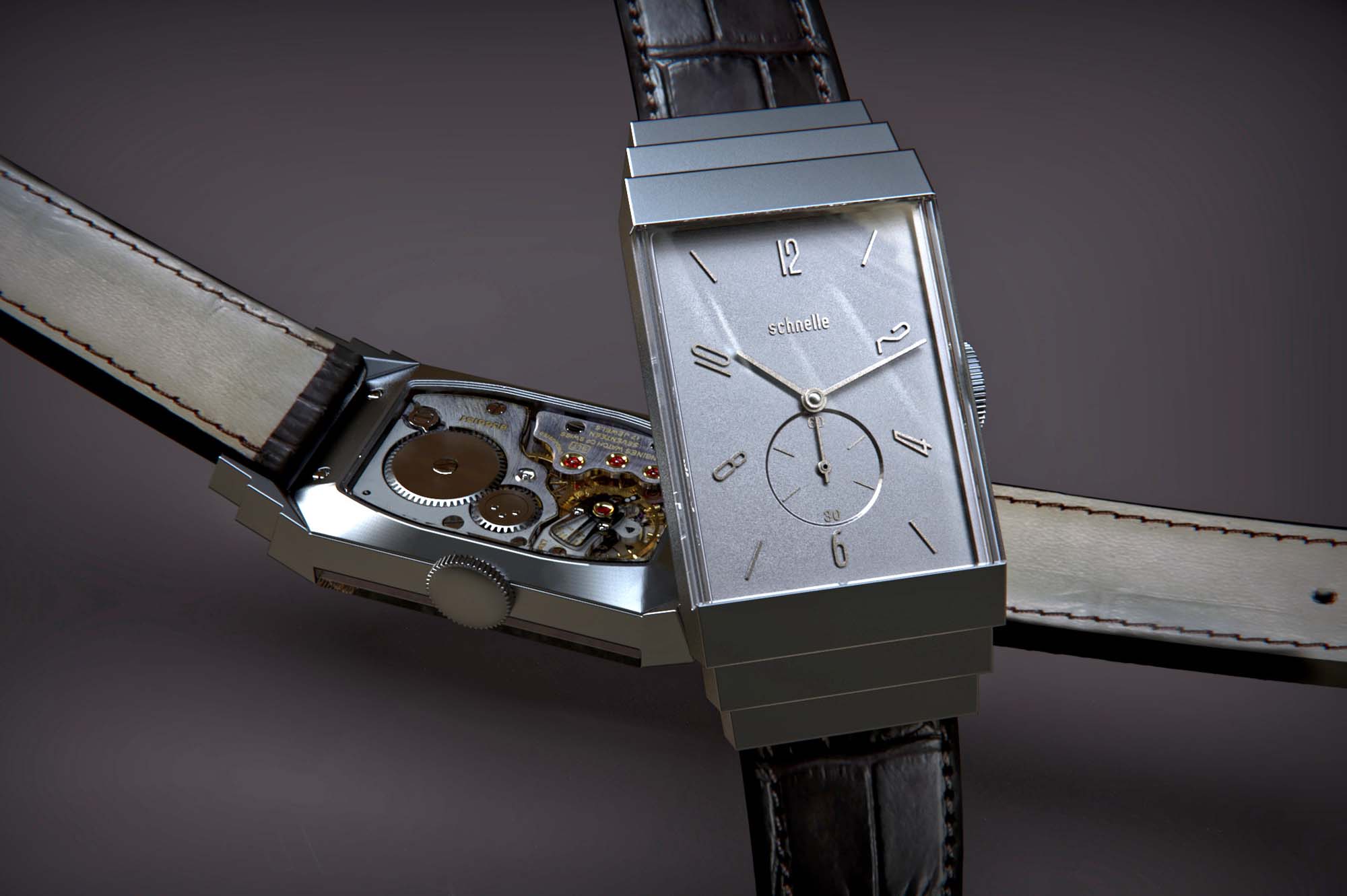Thomas Schnelle’s journey began in northern Germany, where he pursued studies in toolmaking. After completing his technical college education, Schnelle found himself at a crossroads. While he contemplated studying design, a lack of confidence initially held him back. It was at this juncture that fate intervened, leading him to Chronoswiss, then owned and operated by Gerd-Rüdiger Lang in Munich.
Chronowiss and Lang could be a long story in itself since Lang had mentored and influenced a lot of the next generation of watchmakers and brands. In 1991, 21-year-old Schnelle approached Lang, and it paid off when Lang entrusted the young newcomer with a significant project – creating a series of 99 escapement models. Schnelle officially started his career in the watchmaking industry as a supplier to Chronoswiss, later becoming a freelancer for the Bavarian brand.
In 1995, Schnelle completed his watchmaking studies in Würzburg, and had the honor to be recognized as Germany’s best young watchmaker in competition. He continued to work as a freelancer for Chronoswiss until 2012, when Lang sold the company to the Ebstein family in Switzerland. Schnelle also repaired Cartier Tank watches for nearly 20 years for the Richemont group. He even took on side projects like milling air stream chambers for Infineon, and offering his technical design services.
In August 2024, I visited Schnelle at his home atelier in Munich, and his workshop was filled with photographs, technical designs, models from various Chronoswiss watches. One watch movement design that stood out was the Sauterelle, developed by Karsten Frässdorf. It is a pity that this project never came to fruition due to technical issues. There were long discussions about this watch on Watchuseek and the Watchprosite forums in the 2000s.
His modest home atelier is a block away from the Theresienwiese fairground where the annual Oktoberfest takes place. We walked through the fairground as the Oktoberfest tents were being set up, to get a schnitzel and beer at Augustiner Keller. During lunch we talked about his family and living in this neighborhood. Schnelle is one of the most relaxed people I’ve come across in this industry, and it is very easy to strike a conversation with him. Everyone in the neighborhood seems to know him.
We change the subject of discussion to why he wanted to create his own watches. Schnelle always had an idea to build his own watch, but he could never find the time to make any progress. He continued to accumulate knowledge, acquire machinery, and develop ideas. In 2019, he started to develop prototypes and with some encouragement from his friend, decided to present his first watch in 2020 at “Kauf Lokal,” a retail concept of “Buy Local” in Munich where local manufacturers come together to showcase and sell their products.
Unfortunately, COVID-19 cut short his plans and Kauf Lokal ended early with only little interest in his watch. In a fortuitous turn of events, he sent one of his prototypes to Marc-André from WatchesTV in 2021, who featured it on his YouTube channel. This exposure put the spotlight on Schnelle, attracting attention from watch enthusiasts around the globe. He sold his first 20 watches that year.
As the word spread through social media, forums, and reviews, the orders started to come in at a fast pace. He showed me his growing stack of orders that are in process to be fulfilled. Schnelle completes 2 watches a month while still managing his freelance work. But he is steadily increasing the capacity to build more watches each month. The complex case construction, bespoke dials, sourcing and refurbishing the movements, etc. takes him time as a one-man operation.
As we order a second beer, we change the topic to the design of his Art Deco watch. Initially, Schnelle’s sketches for this watch were way more round, but these designs according to him were not as unique. It was only when he approached the design with a simple, boxy layout that he struck gold. Through an iterative process of renderings, Schnelle refined the design, arriving at a more appealing and distinctive look. Even though it was unintended, the decision to create a rectangular watch was not only an aesthetic choice, but also a strategic one. Schnelle recognized a gap in the market that not many independent brands or watchmakers were making watches in this shape.
The case size is relatively small at 23 mm and 7.5 mm thick. Schnelle’s intended audience were women, but 90% of the watches are being purchased by men. The reason is that this watch fits well on medium to large wrists with a lug to lug measurement of 48mm. On my wrist, it wears larger than the medium Reverso. The Art Deco case design is unique with dramatic straight-edge steps on both ends. The expertly constructed U-shaped sapphire crystal is a brilliant design that serves a dual purpose – it captures as much light as possible, enhancing the watch’s legibility and visual impact, and it creates an illusion of openness. Schnelle says he wanted to give the feeling of an infinity pool. When you view the case from the side profile, you can see the resemblance.
Schnelle makes his own cases with the CNC machine in his workshop. He sandblasts the case prior to finishing the edges. The strap measures 17mm at the lugs and tapers down to 14mm. Thomas offers a few strap options, but I found them a bit vintage for my taste. Many strap makers are offering this size or can make one. The strap does need to be slim due to the way it fits under the thin lugs.
Schnelle keeps the dial very simple and offers them in four colors – German silver, ruthenium grey, black, and salmon. He makes them in his workshop and therefore most of his customers request bespoke dials – with different numbers, fonts, and colors. Schnelle visited me in Prague recently and showed me his watch with an impressive sapphire dial. The numbers are Art Deco with the rest of the dial giving a Bauhaus vibe. Most importantly, the dial leaves all the drama for the case and crystal. I like the large sunken sub-seconds and slim hands. The dial has a subtle texture that shines brightly under the right light.
Schnelle made a smart choice in using vintage Longines 9LT movements that he sources through auctions and from his contacts in the industry. It is a slim rectangular dress watch movement made by Longines in the 1940s and 50s, a period during which Longines made some of the best movements in the world. While this is a simple movement, it is considered a mid to high grade caliber. The hand wound movement has 17 jewels, gold chatons on most of the jewels of the drive train, a Breguet overcoil hairspring, and a decent regulating mechanism. The 9LT is relatively easy to service and plenty of parts are available for repair. For each watch, Schnelle not only cleans and lubricates the movement, but often replaces worn parts and fine-tunes its regulation. It’s a labor-intensive process. He also provides the option to have the movement plated in a salmon gold tone.
As our discussion turned to pricing of the watch, Schnelle let out a small laugh. The watch is priced at $2,000 (plus tax). For a micro-indie watchmaker that is putting out only a couple of watches each month, this was shocking! Just the man hours put into making the watch justifies a higher price, and adding bespoke elements to the dial adds only a few hundred dollars to the price.
I left the most important question for our third beer: how does one get one of these cool watches? Schnelle let out another laugh and said it is a problem he is trying to solve. He is increasing production and trying to fulfil the orders as quickly as possible. However, I got the sense from him that when someone visits him and makes that in-person connection, there is a better chance for that visitor to receive the watch sooner rather than later. I have seen this happen with other independent watchmakers as well. I can understand their perspective that with so many brand name watches readily available, someone took the time and spent the money to visit a single-watchmaker workshop, just to experience their reality.
You can easily reach out to Schnelle by emailing him – thomas@schnelle.co or send him a DM on Instagram.
The post The Journey of Thomas Schnelle appeared first on Worn & Wound.









